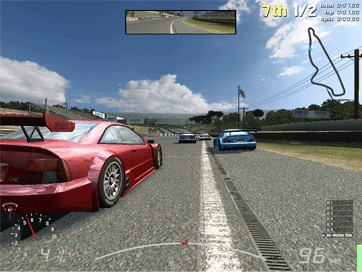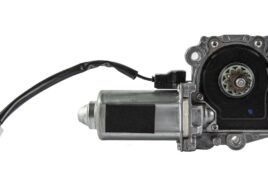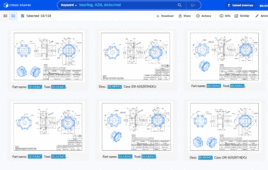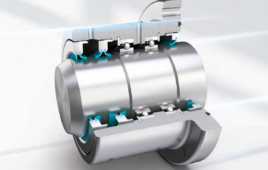Online Editors Note :: “Live for Speed”
Live for Speed is a small development team dedicated to making the best online racing simulator. Their current release is S2 with which they attempt to recreate the thrill and fun of real racing, by simulating all aspects important to racing.
Festo’s “Live for Speed” Race Car Simulator simulates a virtual car race with diagnostics that provide a transparent view of the entire pneumatic system. The control unit determines the driver’s ranking based on lap time, as well as air consumption, and a diagnostic display unit displays the results at the end of the race
Imagine attending a tradeshow where you’re the virtual driver of a racecar in a simulated race with up to 23 other people. Your ranking is determined not only by the time it takes you to complete the race, but also by the number of objects you hit and the severity of the hits, as well as the number of times you must re-align your car.

The driver views the simulated race on a large screen display.
In a race car simulator designed by Festo Corp. called “Live for Speed,” the driver sits on a moving carbon fiber chair, which connects to a hexapod support structure, comprising six fluidic muscles. With its degree of freedom in six directions – three linear and three rotational, as well as a forced feedback steering wheel, the racer experiences the true-to-life gyrations he would feel on an actual racetrack. What’s more, a digital surround sound system floods the driver with stellar, race-tuned engine and exhaust sounds, and a large monitor visualizes the race. The simulator lets trade show attendees experience how Festo’s components work together and gives them a chance to feel a fluidic muscle in action.

The Race Car Simulator is based on a hexapod support structure that contains six fluidic muscles. Because the actuation and the forced feedback are so fast, the driver feels virtually no time delay between his actions and the response of the unit.

The CPX determines the winner based upon each car’s air consumption. When a driver hits a curb, runs over grass, or corrects the direction of his car, he consumes extra air, which knocks down his score. (Time is also a factor.)

The entire pneumatic system of the simulator is transparent, and diagnosticians can look into each actuator remotely to check its health status and history.
The muscles function as actuators that accelerate the racer without time delay whenever he hits a curb, drives in the lawn, touches a barrier, or has to correct the direction of his car. A PC controls the game, and an algorithm in Festo’s control unit, CPX, controls six proportional pressure regulators. They have embedded sensors that measure the pressure and pressurize the fluidic muscles depending on the situation in the race. According to Christian Boehm, PhD, Manager Technical Engineering Center (TEC) of Festo, Corp., because they had to control six axes simultaneously, the company’s engineers had to incorporate a complex algorithm into the simulator’s control unit to pressurize the fluidic muscles accordingly. Additionally, the unit uses fluidic muscles, so there is almost no time delay between the driver’s actions and the rate at which the driver feels the response. It is a realistic race – the racer feels the track, and he feels the car accelerate and decelerate when he puts on the gas or the brake pedals.

According to Christian Boehm, PhD, Manager Technical Engineering Center (TEC) of Festo, Corp., the biggest design challenge engineers faced was to translate the forced feedback signal from the software into a hexapod structure. “You have to pressurize each actuator as the situation changes during the race. We had to incorporate a very complex algorithm into our control unit because we had to control six axes at the same time.”
Fluidic muscles are actuators that consist of rubber hoses, and when pressurized, they contract. They have no moving parts, so they have extremely long life times. Also, there is only one actuator chamber because they do not have a piston that moves back and forth from one end position to the other end position. So there is no need to pressurize the opposite branch of the actuator to move the piston back. The fluidic muscle generates a much higher force than a normal pneumatic cylinder, so it can operate at a lower pressure, which is very energy efficient.
The pressure regulators in the system regulate the pressure in proportion to an electrical value. They record the pressure at the given working condition. The electronic control compares the pressure value with the nominal value. An electrical signal is then transmitted proportional to the output pressure. If the nominal and actual values differ, the CPX sends a signal to actuate the regulating valve until the output pressure and the nominal value match.
In a multi-player race, the simulator supports 23 players within an intranet, or it can be played over the Internet. In this mode, it ranks the drivers based on lap time and air consumption. The simulated car can consume a considerable amount of air during the race, depending on the driver’s skill. Air consumption rises when the driver hits an object or corrects the direction of his car.
A flow sensor in the main air supply line of the simulator connects to the CPX, which runs an algorithm to determine the air consumption. At the end of the ride, air consumption and lap time appear on an MS-Excel Worksheet.
The Festo Diagnostic Display presents diagnostic data of the system based on CPX. The simulator is virtually transparent. Users can visualize the entire pneumatic system in action. They can view the data through a Web browser, OPC to a SCADA software, or Front End Display (FED). Users can also view the information remotely as numbers, indicators, or graphs, and can log the data to an SQL database. Developers can program the database to record the driver’s name, company, start number, lap time, air consumption, cycle time, air consumption per cycle, average pressure per cycle, extension and retraction time for every stroke of the actuator, every threshold violation that occurred during a cycle, and more.

Six pressure regulators of the type VPPM interact with the CPX in proportion to an electrical value to pressurize the fluidic muscles.
Festo, Corp.
www.festo.com
Filed Under: Pneumatic equipment + components, Automotive, FLUID POWER, LINEAR MOTION





Tell Us What You Think!